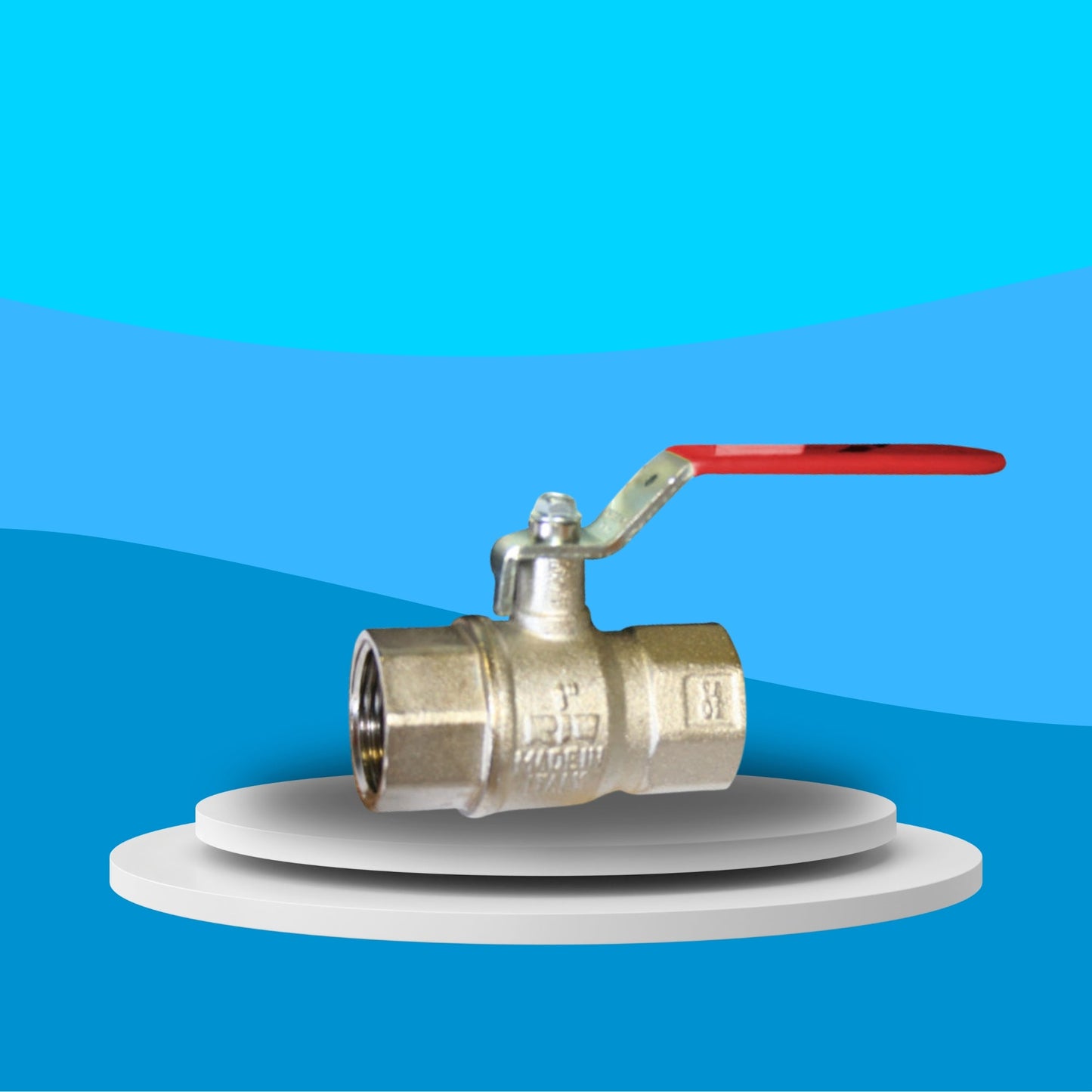Wras Valves
Wras Approved Brass Ball Valve - PN40 BSI Gas Approved - HTB Screwed BSPP (Red Lever Handle)
Wras Approved Brass Ball Valve - PN40 BSI Gas Approved - HTB Screwed BSPP (Red Lever Handle)
Couldn't load pickup availability
WRAS Approved | BSI Gas Approved | PN40 Rated | HTB Certified | BSPP Threaded | Red Lever Handle
This WRAS Approved Brass Ball Valve with PN40 pressure rating, HTB (High Temperature and Blowout Proof) certification, and BSI Gas Approval offers dependable shut-off control for both potable water and gas systems. Designed with screwed BSPP (British Standard Pipe Parallel) threaded ends, this full bore valve provides a leak-tight, secure connection and is well-suited to domestic, commercial, and light industrial installations.
The red lever handle ensures quick manual operation and clear visual status for isolating water or gas lines. With a PN40 pressure rating, it supports medium to high-pressure systems, while the HTB certification provides added assurance in high-temperature or high-risk environments—meeting strict safety standards.
Manufactured from high-quality brass, this valve is corrosion-resistant and durable, offering long-term performance in demanding service conditions. The full bore design ensures minimal pressure loss, making it suitable for applications requiring optimal flow rates and efficiency.
WV 4190
Share

FAQ's
What is the difference between a valve and an actuator?
What types of actuators are available?
The main types of actuators are:
Pneumatic actuators – use compressed air for fast, reliable operation.
Electric actuators – use electrical power for precise control.
Hydraulic actuators – use fluid pressure for high-torque applications.
Each type offers unique advantages depending on the environment, media, and system control needs.
How do I choose the right actuator for my valve?
To select the correct actuator, consider:
Valve type and torque requirement
Power source available (air, electric, or hydraulic)
Operating environment (temperature, humidity, hazardous area)
Control signal type (on/off or modulating)
Matching actuator torque and compatibility with the valve’s ISO mounting ensures reliable performance.
What are the main types of valves used in automation?
The most common valves in automated systems include:
Ball valves – for tight shutoff and quick operation.
Butterfly valves – for larger flow control with compact design.
Globe valves – for precise throttling and flow regulation.
Check valves – to prevent backflow.
Gate valves – for full bore flow isolation.
What’s the difference between a double-acting and spring-return actuator?
Double-acting actuators use air (or power) to both open and close the valve.
Spring-return actuators use air to open (or close) the valve, and a built-in spring to automatically return it to a safe position when power or air is lost — ideal for fail-safe operation.
How often should valves and actuators be serviced?
Regular maintenance intervals depend on operating conditions, but a good rule of thumb is to inspect every 6–12 months.
This includes checking for leaks, lubrication, seal wear, and actuator responsiveness to prevent unexpected downtime.

